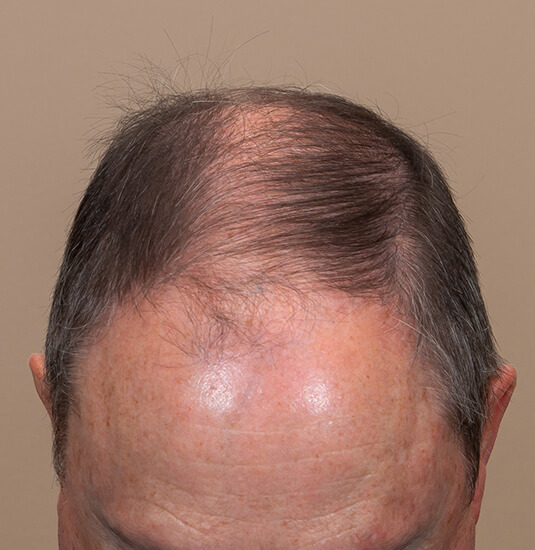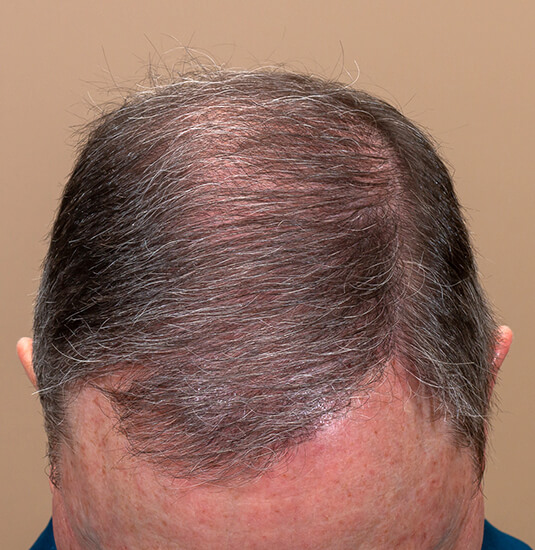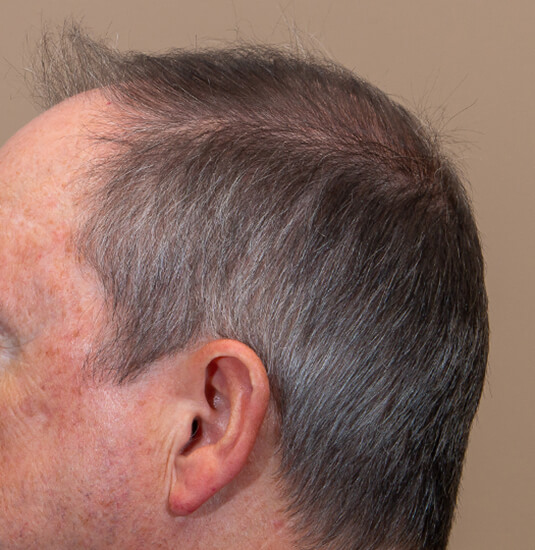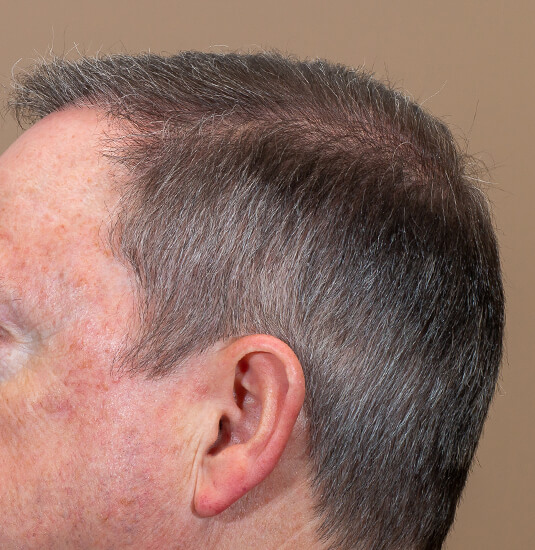Our team at Nashville Hair Doctor has treated thousands of hair transplant patients over the years. You would think that our patients would skew older, since hair loss is typically brought on by age. But this is not necessarily the case. We regularly restore hair for 20 to 30-year olds, and the average age of our hair transplant patients in Nashville, Memphis, and Louisville is below 40. However, today we would like to give a shout-out to our slightly older patient base by answering a pressing question:
What to Know About a Grey Hair Transplant
Can grey hair be transplanted?
That is such a good question. At first glance, it seems obvious that the answer is yes. Why should it matter what color your hair is? While that is true – grey hair can indeed be transplanted just like any other color hair – there are some important considerations to bear in mind. At Nashville Hair Doctor, we strive hard to give you all the information you need to make an informed decision. Today we will discuss the transplantation of grey hair.
Grey Hair is Healthy Hair
One common myth about grey hair is that it is somehow unhealthy. That your hair begins to slowly die by first turning grey and then falling out altogether. But that is not at all how it actually happens. Many people – men especially – experience a receding hairline, if not a balding of the crown, at a relatively young age, when their hair is still its natural color. Hair loss and graying hair are not related.
The loss of pigment does not in any way affect the ability of a hair follicle to produce new hair. No matter what color, healthy donor hair from the back of the head is perfectly suited to be transplanted to a balding area.
In fact, grey hair tends to be more textured and thicker than pigmented hair. As any hair restoration technician will tell you, transplanting thicker hair produces the most satisfying results, because it is easier to obtain full coverage with fewer grafts.
Causes of Graying Hair vs Causes of Hair Loss
It does seem reasonable to assume that the two processes – graying hair and hair loss – are somehow related. After all, they both seem to accelerate with increasing age. But again, this is simply not the case. What, then, causes hair to turn grey? And what causes hair loss?
What Causes Hair to Turn Grey?
As we age, our hair experiences a loss of pigmentation – first turning increasingly grey as its pigmentation decreases, and eventually completely white when pigmentation is lost altogether. These pigments – called melanins – are produced by cells in the hair follicle called melanocytes. Over time, the melanocytes produce less and less melanin. This starts between the age of 40 and 50 for most people, but can set on as early as 20-30 in some. It’s not entirely known why this happens, just that it is somehow genetically programmed for each individual. The graying most commonly begins at the temples and then slowly takes over the entire scalp.
What Causes Hair Loss?
Like graying hair, hair loss is most commonly genetically programmed – even though the two causes are not related. You might turn grey early but get to keep a full head of hair into your seventies, or you might start losing your hair in your mid-thirties but what is left of it might stay a rich brown color until well into your fifties. Hair loss can be caused by disease or hormone imbalances, but the most common cause of hair loss in men is male pattern baldness.
The unique feature of male pattern baldness is that one part of the scalp is noticeably exempted from it – the back of the head. Somehow the hair in that region is resistant to hair loss, which is why hair transplants work as well as they do. You take follicles from the region resistant to hair loss and transplant them to the balding areas – and voila, you are left with a fuller head of hair for years to come.
The Transplantation of Grey Hair
To ensure the effective transplantation of grey or graying hair, our hair transplant master technicians use a wash-out dye to darken the short hairs before extraction. The powerful light beam that is used to illuminate the area can make less-pigmented hair appear more translucent so that it’s difficult to see the angle at which it protrudes. Dying it dark ensures that it can be extracted safely and swiftly and then implanted to its new location. This is just a small detail that a good hair clinic will make sure is done right.




What Color Will the Transplanted Hair Take On?
Now this is where it gets interesting. You would think, wouldn’t you, that the healthy donor hair from the back of your head also determined the color in its new location. If the melanin gets produced in the cells contained in the follicle, doesn’t that mean that the donor hair retains the color no matter where it is transplanted to?
But strangely, this does not always seem to be the case. Many patients report that after a few growth cycles – hair regularly falls out to be replaced by new hair and this is called a growth cycle – their transplanted hair assumes the color of the hair in its new location. If you are at the stage in your life where your hair has begun to grey, this is good news! That way you don’t have to worry that your hair will take on a strange color pattern after you’ve had your transplant.
Can I Color Transplanted Hair?
However, this effect is not absolutely certain. For some patients, the donor hair may indeed retain a different color than the surrounding hair that was previously there. In this case it is also good to know that should you currently color your hair or plan to start coloring your hair in the near future, it is completely fine to do so as early as 4 weeks after your procedure.
This is where the NeoGraft method of Follicular Unit Extraction (FUE) gives you an extra bonus. Since the recovery is so much faster than after a hair transplant using the Strip Method (where an entire strip of scalp is removed from the back of the head and then dissected into grafts), you may begin coloring your hair earlier as well. And it allows the technician to extract hair follicles from all over the back, giving more choice in follicle selection than a narrow strip does. This also helps with the blending of hair.
In closing: Your age doesn’t matter one bit in terms of your eligibility for a successful hair transplant. Neither does the color of your hair. What matters is solely how much healthy donor hair is available at the back of your head to be transplanted into the balding areas without thinning out the back too much. It is astounding how much you can transform your look by simply recreating a fuller hairline with as little as 1,000 grafts ($5,500 at Nashville Hair Doctor).
Would you like to receive a free, no-obligation quote for a hair transplant? Simply upload your photos directly from your phone and we will provide you a quote within one business day. We welcome patients from all over the United States who value our experienced technicians and affordable cost per graft.
